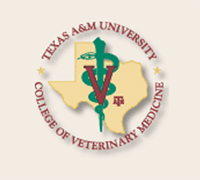|

|
 |
Texas A&M to be Home to Veterinary Cancer
Center On March 27, the Veterinary Medical Teaching Hospital at Texas A&M University College of Veterinary Medicine & Biomedical Sciences announced that it had received a significant boost in its ability to bring the latest in cancer treatment to veterinary medicine when the Board of Regents voted to approve the construction of a veterinary imaging and cancer treatment center. “The College of Veterinary Medicine is dedicated to maintain state-of-the-art instrumentation that improves the clinical services we provide our patients, their owners, and our referring veterinarians,” said Dr. H. Richard Adams, dean of veterinary medicine. “Many of the spontaneous cancers that appear in animals are very similar to those in humans, and the technology needed to treat them is the same. The things that we learn from the treatment of our patients may well impact how humans are treated for cancer in the future.” The cancer center will house a linear accelerator which utilizes high energy x-ray and electron beams to treat cancerous tumors in both large and small animals. The new technology is expected to greatly enhance the educational experience for veterinary medical students and increase the quality of medical care available for patients at the veterinary medical teaching hospital. “Our radiologists and oncology faculty using that equipment will keep us on the leading edge of cancer treatment,” said W. Terry Stiles, hospital director. “This is going to be a valuable resource not only to our clients, but to our students and our research faculty.” The addition of MRI capabilities to the building improves the ability of veterinarians to image and diagnose many conditions and disease, especially those of the brain and spinal cord. “The MRI unit will enhance our ability to diagnose problems with soft tissues,” said Adams. “While it will be heavily utilized by our Neurology/Neurosurgery service, it will also be a key diagnostic tool for our equine specialists in the diagnosis and treatment of lamenesses. This technology will be integral to our establishment of a regional center for lameness.” At a projected cost of $4.5 million, the imaging and cancer building will have approximately 8,000 square feet including space for support personnel, and is designed for both small animals and horses. It will be located adjacent to the Large Animal Hospital and within 100 yards of the Small Animal Hospital. |
| Back to News |
BENEVOLENCE | BENEFITS | GROOM ELITE | PERSONNEL | LINKS | CONTACT US
